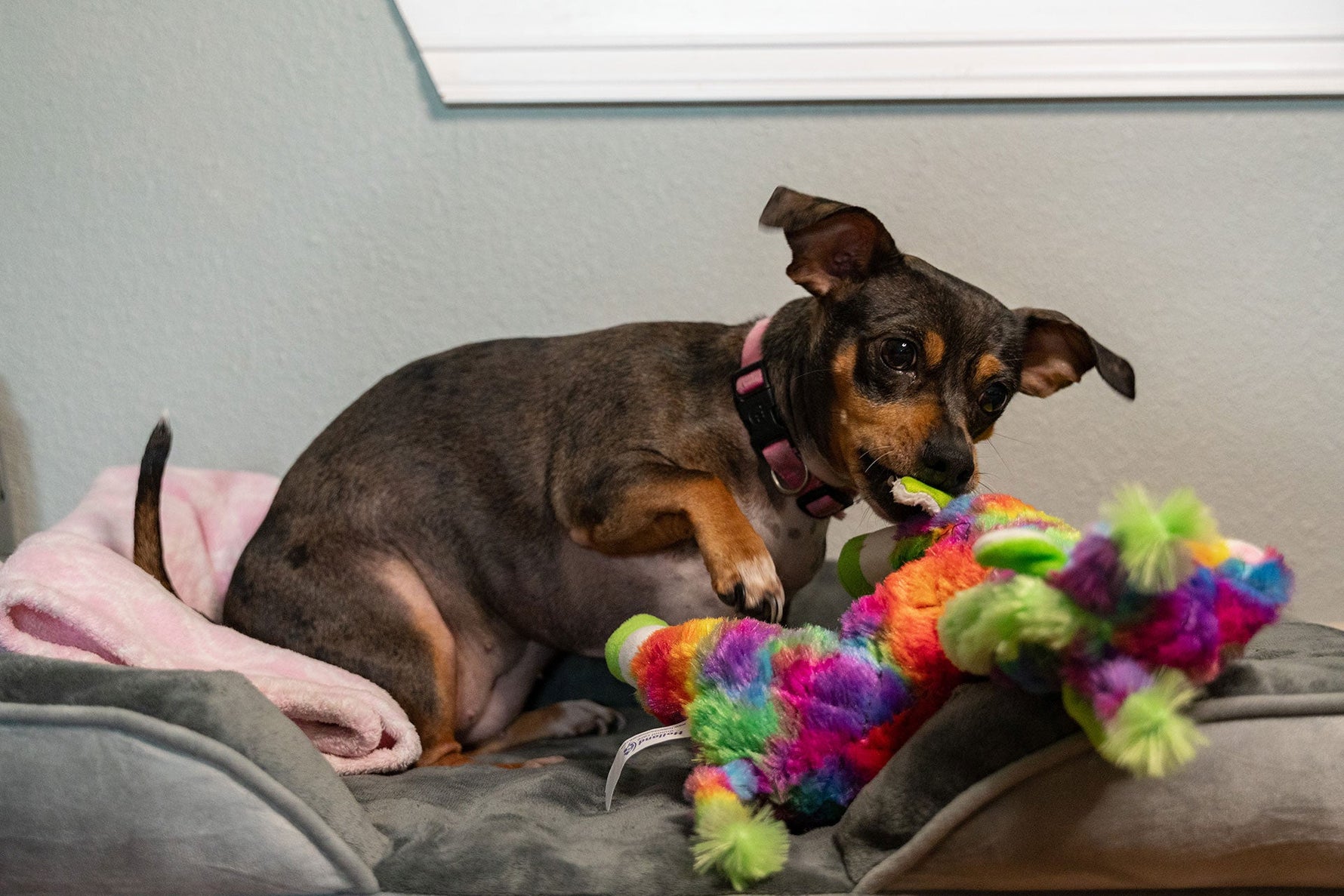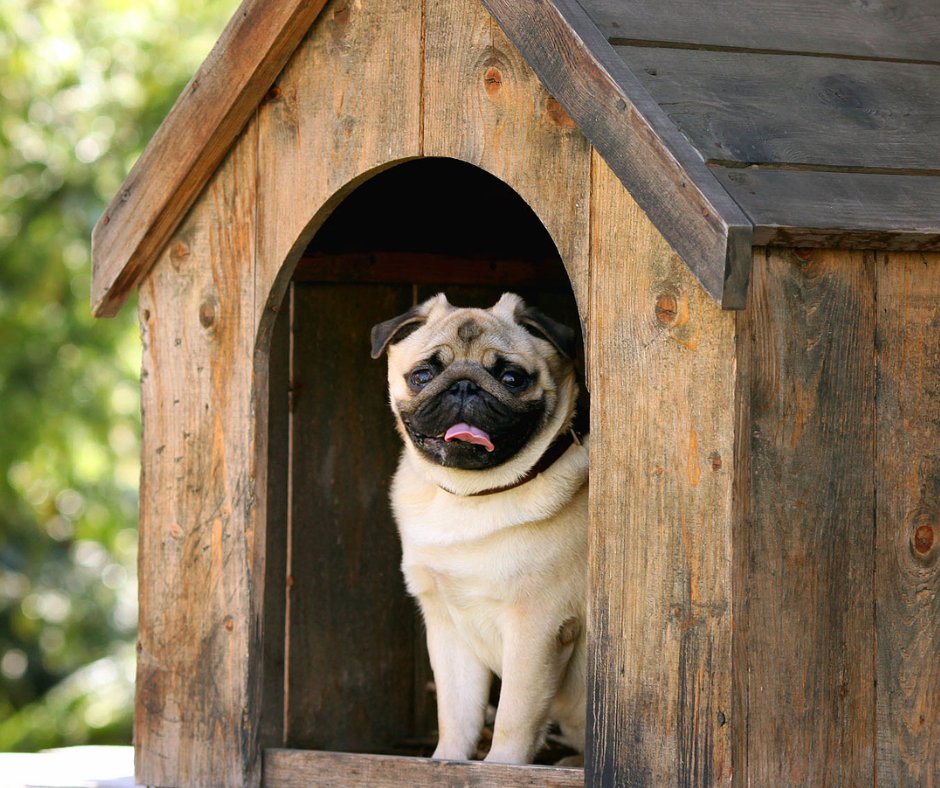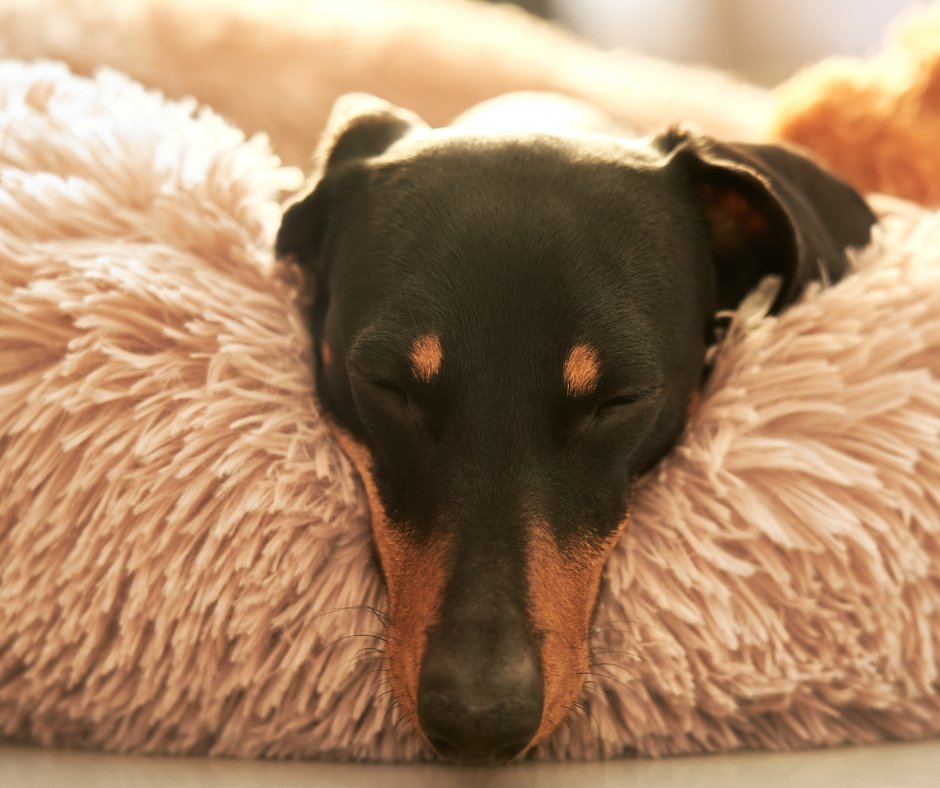Get some of the best pet parenting advice, paws down! For even more, join our free pet parent collective, Pawra Mi Gente
News

News
Why do Millennials Spend so much on Pets
on Nov 01 2025
America loves their pets. It is estimated that 67% of American households are sharing their space with a furry friend. In a recent study, Americans born between 1980 to 2000 have taken the lead in pet parenthood. Millennials surpass Baby Boomers for the top pet owner spot by 5%.
The Millennial generation’s financial hardships are apparent in their dating life, homeownership, and rising mental health concerns. So why are they spending so much on their pets?
Pets Are Cheaper Than Kids
Many Millennials are hesitant to start their own families due to anxiety regarding the future. The pandemic, social unrest, and their own economic hardships are driving them away from raising the next generation. Instead, they are putting time and money into their pets.
Unlike pet ownership, Millennials have fallen behind Gen X and Baby Boomers in homeownership. Because Millennials are not buying homes and starting families, they are renting apartments and replacing children with pets. This could be because Millennials want a trial run before raising a family of their own, or it could simply be that pets are cheaper than and not as high maintenance as kids.
Loneliness
Pets are known for curing loneliness. Having a cat at your feet or a dog by your side is a known remedy for anxiety and depression. According to a Business Insider study, 30% of Millennials often feel lonely, compared to Gen X at 20%, and Baby Boomers at 15%.
This devastating statistic explains why Millennials are putting their money towards pets rather than children. It has been proven that in stressful times, people turn to pets. This is clear in the spike of pet adoptions over quarantine.
Additionally, Pew Research Center found that Millennial marriage rates are rapidly declining. This independent generation would rather live on their own with the company of their pet than commit to starting a family.
Raised in the Online-Shopping Era
Millennials were the first generation to grow up with the world at their fingertips. Online shopping is almost second nature to them. It is convenient and quick, which is what younger generations were raised to expect.
Millennials are also known for impulse spending, and websites like Amazon encourage this spending behavior. With pets being their primary companion, it is no surprise their furry friends are getting spoiled with new toys, clothing, and accessories.
Millennials Need Someone to Spoil
Interesting statistics have been released regarding Millennial pet purchases. According to Wakefield, 76% of this generation is more willing to splurge on a luxurious item for their pet rather than for themselves. This reinforces the idea that Millennials view their pets as a replacement for children.
According to Packaged Facts, Millennials spend up to $16.6 billion annually on their pets. That is more than any generation has spent on pet products to date. It is possible that with their decline in marriage and dating, Millennials are searching desperately for someone to spoil. As this generation has settled into their full-time careers, they are looking to use their income on someone other than themselves.
In conclusion, Millennials are helping many shelters by adopting pets at a growing rate. They have also boosted the pet industry immensely. It will be interesting to see how pet ownership and marriage rates differ as Millennials enter their thirties and forties.

News
How to Stop Your Dog From Chewing Everything They See
on Oct 18 2024
Chewing is a natural behavior for dogs, but when your wood furniture, favorite shoes, or even baseboards are falling victim to your dog’s teeth, it’s understandable that you’ll want to seek some solutions.
After all, this habit not only leaves your home in disarray, but chewing the wrong things, like electrical cords or metal objects, may also put your dog’s safety at risk.
Maybe you’ve already tried a few things, but they just haven’t done the trick yet. Don’t give up now - the experts at Zooneepet are here to help now. With a little understanding of what’s causing your dog’s behavior and some guidance on how to redirect it, you can put an end to the constant chewing.
Why Does My Dog Chew Everything in Sight?
Before you can stop your dog’s destructive chewing, it’s essential to figure out what’s triggering it. Here are some common reasons why dogs chew:
1. Teething Troubles
Puppies in the teething phase, between around 3 to 6 months old, will naturally chew on anything and everything. Chewing helps soothe their sore gums and aids in the process of adult teeth coming in.
While chewing at this age is a natural part of growing up, it’s important to make sure it doesn’t become a bad habit in your grown dog. Provide safe chew toys and start training early.
2. Skin Issues or Allergies
If, instead of toys, shoes, or furniture, your dog is chewing on their own paws or fur, it may be a sign of allergies, fleas, or other skin conditions.
Dogs can easily turn their teeth into tools against an itch that just won’t go away. In the end, however, they can end up doing more harm than good. Consult a vet to address the root of the problem, as continued chewing could lead to sores or infection.
3. Beating Boredom
Your dog can’t head out for happy hour at that local spot. They’re probably not into Netflix marathons or card games either. However, just like their owners, a dog without enough mental and physical stimulation will get bored.
A dog with nothing to do will find something to chew. So, try introducing puzzle toys or simply spend more time playing fetch or going for walks.
4. Stress and Anxiety
Have you recently moved or changed routines? Sometimes, stressful situations can lead an otherwise well-behaved dog to act out.
Dogs experiencing anxiety—whether from separation or an unfamiliar environment—may chew as a way to cope. In cases of stress-related chewing, addressing the anxiety itself is key. Calming tools, crate training, or working with a behaviorist can help your dog feel more secure.
5. Ingrained Bad Habits
If your dog has been chewing for a long time, it may have become a habit. Like any unwanted behavior, the earlier you work on training, the better, but there’s no need to lose hope.
Training and redirecting this behavior is still possible, even with older dogs, but consistency and patience are crucial.
What Deters Dogs From Chewing on Furniture and Other Things?
Now that you know what’s causing your dog’s chewing habits, it’s time to tackle the next challenge: how to stop it. Whether your dog is gnawing on your furniture out of boredom or chewing their paws due to allergies, there are solutions that can help keep those teeth away from the wrong stuff.
1. Repellent Sprays
Repellent sprays can be a quick and effective way to deter your dog from chewing on unwanted items. These sprays are designed to taste or smell unpleasant to dogs, encouraging them to avoid anything treated with it. With consistent use, most dogs learn to steer clear of furniture, shoes, or any other objects sprayed with these deterrents.
2. Gates and Other Barriers
Sometimes, the best way to stop destructive chewing is simply keeping your dog away from the temptation. Put up puppy gates to limit your dog’s access to certain areas or rooms where they might find something to chew on. They won’t be able to wander too far out of your sight, making it easier to supervise and correct the behavior before it starts.
3. Crate Training
Crate or kennel training is another helpful strategy, especially when you can’t keep a constant eye on your dog. With the right approach, a kennel becomes a safe and cozy spot for your dog to relax while preventing access to off-limits items. Plus, it gives them a space to call their own when they need to settle down.
How to Help Your Dog and Stop Them From Chewing
To truly prevent destructive chewing, it’s essential to focus on meeting your dog’s physical, mental, and emotional needs. Addressing the different root causes of a chewing habit, we can get a good start on stopping it in its tracks.
1. Treat Any Health Conditions
Before anything else, health problems should be ruled out. If your dog is chewing on their paws because of allergies or other conditions, they may be trying to relieve itching or discomfort. Consult your vet to determine if there’s an underlying health issue causing the behavior, and treat it accordingly.
2. Provide Physical and Mental Stimulation
Beat boredom with plenty of exercise and playtime. A long walk, a game of fetch, or even a run at the park can do wonders for your dog’s energy levels. Puzzle toys are a great option too, giving your dog something to focus on. Regular training sessions can also provide both physical and mental stimulation, keeping your dog engaged and satisfied.
3. Soothe Stress and Anxiety
Getting on a routine with consistent playtime and exercise can help reduce anxiety, but if something specific is stressing out your dog—like separation anxiety, a recent move, or new visitors—it’s important to address it.
Work on creating a safe environment where your dog feels secure. Calming techniques, such as crate training, or even dog-friendly calming aids, can help them feel more at ease and less inclined to chew out of nervousness.
4. Give Safe Chewing Options
Even when all of your dog’s needs are met, they still have a natural instinct to chew. Instead of fighting that instinct, provide safe chewing options like durable chew toys or dental treats. Not only do these satisfy their urge to chew, but they can also keep your dog’s teeth clean and their mind engaged.
How Do I Train My Dog Not to Chew on Everything?
Even with enough playtime and plenty of safe chew toys, some dogs will still need a little extra guidance to break bad habits. This is where consistent training comes into play, helping them understand what’s off-limits and reinforcing positive behaviors.
Use Positive Reinforcement Training
Instead of scolding your dog for chewing on something inappropriate, use positive reinforcement to guide their behavior. Scolding can sometimes cause fear or anxiety, which might make the chewing problem worse.
Instead, praise your dog and offer treats when they chew on their designated toys. This helps them associate good behavior with rewards, making it more likely they’ll repeat that action in the future.
Make Sure to Catch Them In the Act
Supervising your dog closely is crucial during training. If you can catch them in the act of chewing on something they shouldn’t, it gives you the perfect opportunity to redirect the behavior before it becomes ingrained.
Timing is everything—interrupting the behavior at the right moment will help them understand that chewing on certain objects is off-limits. Without supervision, your dog may get away with unwanted chewing, making it harder to correct the habit later.
Redirect Away From Unwanted Chewing
When you catch your dog chewing on something inappropriate, use a firm command like "trade" and replace the unwanted item with a safe chew toy or treat. When your dog takes the toy, be sure to praise them enthusiastically. This not only teaches them what they should be chewing on but also reinforces the idea that choosing the right item leads to positive attention and rewards.
Put Your Dog’s Chewing Habit Behind You Today
It’s time to take action! Start by understanding the reasons behind their behavior—whether it's boredom, anxiety, or teething. Use the tips we've covered, like providing safe chew toys, setting up barriers, and incorporating positive reinforcement training.
Remember, patience and consistency are key. Every dog is unique and it may take some time to see results. If you need a refresher or new strategies along the way, don't hesitate to revisit these tips. Together, you and your furry friend can overcome this chewing challenge!
As you implement our strategies, don’t forget that your friends at Zooneepet are here to help. Check out our eco-friendly pet products to supply your furry friend with the best.

News
Benefits of Eco-Friendly Pet Products
on Dec 14 2023
We all want our pets to live long, healthy lives. But what if the products we are giving them are doing more harm than good? Sustainable pet products not only benefit the environment but also save your pet from consuming harmful toxins.
What Makes It Eco-Friendly?
Sustainable pet products are made from renewable resources. This means materials, such as water bottles, that would have been thrown into a landfill are reused to create new products.
Instead of using harmful dyes and glues in toys, sustainable products use natural resources to make a durable, long-lasting treasure for your furry companion. It is important to remember that just because a product is labeled “non-toxic” does not mean they do not harm the earth! Sustainable products are clean for your pets and do not deplete natural resources in the making.
Why Eco-Friendly?
Making the switch to sustainable products for your pets is a small but impactful way to help the environment! As research expands, we are finding harmful toxins in our everyday products. And as the world becomes aware of the repercussions for the earth and our bodies, people are making conscious decisions in their purchases to reduce pollution and elevate their personal health.
Buying eco-friendly supplies means your furry friend will have the same amount of fun without consuming harmful toxins found in highly manufactured toys. Sustainable pet products leave out dangerous chemicals and help the environment at the same time. It’s a win-win for your pet and the earth.
It’s Not As Expensive As You Think
Despite popular belief, sustainable products do not have to break the bank! Amazon offers pages of eco-friendly toys and accessories. From leashes to chew toys, you can revamp your pet’s collection while staying on budget.
If you are concerned with throwing out your old dog toys, you can recycle plastic ones or donate them to animal shelters. Not all animal shelters accept used toys, but they are always in need of blankets, food bowls, and towels. Recycling your old toys to pets in need is just as impactful as purchasing eco-friendly toys for your own pets.
Create A Healthy Earth for Your Pets
As pet owners, it is our responsibility to give our pets the highest quality of life possible. This does not exclude how we treat our planet.
Because the pet industry is loaded with toys to choose from, it is important to take into consideration which products will elevate both the health of your pet and the environment in which it roams. Sustainable products are durable, safe, and keep the earth healthy.
We need to do our part in keeping our pets safe from over-manufactured products that will take up space in a landfill or in the ocean after a few months. It is our job to keep the air and earth clean for the animals in our homes and animals in the wild. Do your part and shop sustainably!
Dogs,Grooming,

News
9 Easy Steps On How To Safely Clean a Dog Kennel
on Dec 14 2023
Step 1: Remove toys, blankets, beds, and other objects from the crate.
First, you need to clear out the crate. You should wipe down your dog’s toys and clean them with disinfectant if they have any urine or feces. Set the toys aside so you can focus on your dog’s bedding.
Step 2: Wash the dog’s bedding
It is a good idea to routinely wash your dog’s bedding or blankets (especially if they had an accident in the crate). Usually, you will be able to wash the bedding in your washing machine in warm or cold water with a mild detergent. If you want to remove tough odors, you can add baking soda to your wash load.
If the bedding cannot be machine-washed, you may need to hand wash it in the sink or tub. Using cold water, simply spot-treat the bedding with mild detergent, hitting all the affected areas.
Step 3: Take the crate outside or to a well-ventilated room
Washing a crate can be messy. The best place to wash the crate is outside, with a hose. If you are unable to go outside, though, choose a room with tile floors, such as a kitchen or bathroom. It should be well-ventilated so that the cage can dry without mildewing. Make sure that the dog is nowhere near the crate as you clean it. Keep them in a separate room.
Step 4: Choose your cleaning solution
Believe it or not, dogs are not harmed from exposure to most cleaning solutions. They should not contact the crate until it is dry.
Also, not all solutions are OK to use. Avoid cleaning the crate with ammonia; it sometimes smells like urine to dogs and this could encourage them to urinate in the crate.
Here are a couple of great cleaning solutions that you can mix up at your own home and put in a spray bottle to make cleaning easier:
Half a cup of bleach to a gallon of water
One part dish detergent to ten parts of water
Half a cup of white vinegar to one-gallon water
Step 5: Prep the crate for cleaning
Before you begin cleaning the crate, remove any solid waste or debris that may be present. Use gloves and a plastic bag to dispose of it properly. This step will make the cleaning process more effective and hygienic.
Step 6: Spray and scrub
Using your chosen cleaning solution, generously spray the entire crate, covering all surfaces, including the bottom, sides, and door. Allow the solution to break down any stubborn stains or odors briefly.
Next, take a scrub brush or sponge and gently scrub the crate, paying extra attention to areas that may have accumulated dirt or grime. Ensure you reach the corners and crevices to remove any residue or buildup. Remember to scrub the crate’s door thoroughly as well.
Step 7: Rinse and dry
After scrubbing, rinse the crate thoroughly with clean water. If you’re cleaning the crate outside with a hose, rinse away all traces of the cleaning solution. In case you’re cleaning it indoors, use a damp cloth or sponge to wipe out the cleaning solution, ensuring that no residue remains.
Once the crate is rinsed, it’s important to allow it to dry completely before returning it to your dog’s living space. Set the crate in a well-ventilated area or in the sunshine if possible, which helps speed up the drying process. Ensure that the crate is fully dry to prevent the growth of mold or mildew.
Step 8: Reassemble and sanitize toys and bedding
Once the crate is dry, it’s time to put everything back together. Return your dog’s clean bedding, blankets, and toys to the crate. If the toys are not washable, wipe them with a disinfectant wipe or spray to ensure they are germ-free.
Step 9: Regular maintenance
To keep your dog’s crate clean and fresh, establish a regular cleaning routine. Aim to clean the crate at least once a month or more frequently if needed. Regularly remove any waste or debris, and spot clean as necessary between thorough cleanings. This will help maintain a clean and healthy environment for your furry friend.
Remember, a clean crate is not only beneficial for your dog’s health but also contributes to a more pleasant living environment for both you and your pet. By following these steps and maintaining a consistent cleaning schedule, you can ensure that your dog’s crate remains a safe and comfortable space.

News
Recommended Dog Crate Mats and Beds
on Sep 21 2023
It is nice for your dog to have something comfy to lay and sleep on when in their crate. Now, what exactly that something is will depend on your dog … particularly their chewing habits and potty-training progress. And some dogs prefer less padding while others want to create a nest of their bedding to burrow in.
With young puppies, whatever you put in (if anything) should ideally be both chew-proof and waterproof. Easily washable is another nice feature, too.
For adult dogs, the chew-proof aspect typically is not as important, and ideally, the waterproof one is not either. But, of course, some “mature” dogs are more adolescent-like than others (like labs!)
With senior dogs, you typically do not have to worry about the “chew-proofness” of their crate bedding, but the waterproof feature may become more important as they age, and bedding with orthopedic support can help ease aching joints.
When selecting bedding for your dog’s crate, it’s important to consider their individual needs and habits. Here are some guidelines to help you choose the right bedding:
Young Puppies: For young puppies, opt for bedding that is both chew-proof and waterproof. Puppies are still learning and may have accidents or chew on their bedding. Look for materials that are durable and easy to clean. Machine-washable options are convenient for dealing with any messes that may occur.
Adult Dogs: Most adult dogs no longer have the same chewing habits as puppies. While chew-proof bedding may not be necessary, it’s still essential to consider your dog’s preferences. Some dogs prefer less padding, while others enjoy a more cushioned and cozy surface. Choose bedding that provides comfort and is easy to clean.
Senior Dogs: Senior dogs may benefit from bedding that offers additional support for their aging joints. Look for orthopedic dog beds or memory foam mattresses that can help alleviate any discomfort. Waterproof bedding can be helpful for senior dogs who may have accidents or experience incontinence issues.
Regularly inspect and clean your dog’s bedding to ensure it remains hygienic and comfortable. If your dog tends to chew or destroy their bedding, consider using tough, chew-resistant options or providing them with safe chew toys.
Ultimately, the ideal bedding for your dog’s crate will depend on their individual needs, habits, and stage of life. By selecting the appropriate bedding, you can create a cozy and inviting space where your dog can relax and rest comfortably.


